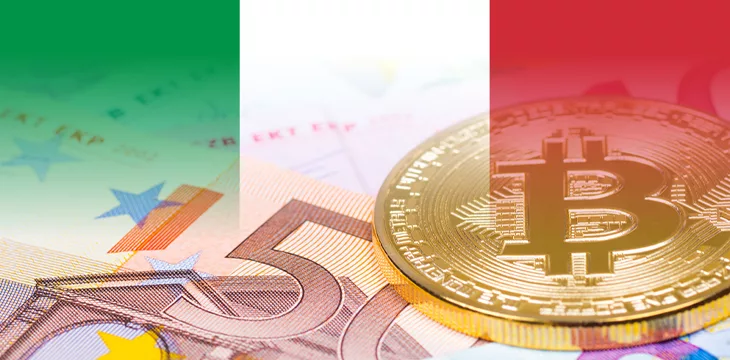
|
Getting your Trinity Audio player ready... |
Italy is increasing surveillance of the digital asset market by introducing new measures to counter market manipulation and other financial crimes as part of its ongoing compliance with the European Union’s Markets in Crypto-Assets (MiCA) regulation.
According to a draft policy reviewed by Reuters, the Italian government is preparing to introduce measures to enhance oversight of digital asset activities. Specifically, the draft policy mandates fines of between 5,000 and 5 million euros ($5,400 to $5.4 million) for insider trading, unauthorized disclosure of confidential information, and market manipulation.
The policy, which would move Italy further towards the standards laid out by MiCA, also designates Italy’s central bank and market watchdog, Consob, as the authorities overseeing digital asset activities—to preserve financial stability and grant an “orderly functioning of markets.”
MiCA begins to take effect
MiCA passed its final vote in the EU parliament in April 2023 and is gradually coming into force this year, bringing digital assets, issuers, and service providers under a broad regulatory framework.
Digital asset service providers, such as exchanges and wallet providers, must obtain a license from national regulators to offer services to EU citizens. Along with license mandates, MiCA will provide new classifications for different digital assets, rules specific to those assets, proof-of-funds requirements for stablecoin issuers, and the requirement for any company seeking to issue digital assets/coins to publish a white paper containing information about the project, including possible risks.
The regulation became law on June 30, 2023, and the new framework will start to apply in two phases: the rules applicable to stablecoins will begin to apply as of June 30, 2024, and rules applicable to digital asset service providers will start to apply as of December 30, 2024.
MiCA brings with it enhanced Anti-Money Laundering (AML) and Know-Your-Customer (KYC) checks and reporting requirements. Crypto asset service providers (CASPs) will also need to demonstrate that they are taking a risk-based approach to their customers and that they implement ongoing monitoring of transactional behavior and risk profiles throughout the entirety of their client relationship lifespan.
Only partially decentralized CASPS are subject to the MiCA regulation, while fully decentralized services provided without intermediaries are excluded from its scope. However, due to the use of foundations and other intermediaries that help moderate decentralized communities, these protocols risk breaching MiCA’s definition of a sufficiently decentralized network.
This means these decentralized finance (DeFi) protocols must either fully decentralize or accept a situation where users must submit to AML and KYC checks—something on which the anonymous and pseudonymous DeFi community is not traditionally keen.
With the stablecoin provisions of MiCA being the first to kick in, the market is gradually adjusting to the new requirements.
Stablecoins in the spotlight
When MiCA’s stablecoin rules come into force on June 30, issuers of asset-referenced tokens (ARTs) and E-money tokens (EMTs)—the former being stablecoins that purport to maintain a stable value by referencing another value or right; the latter stablecoins pegged to a fiat currency—will face several new requirements in the EU.
Namely, a requirement to be authorized by the Central Bank and to publish a white paper containing information on the relevant token for investors; conduct and governance requirements around marketing, disclosure of information, and dealing with conflicts of interest; prudential requirements to ensure sufficient liquidity and the ability to meet redemption requests; and no stablecoins can be offered to the public or admitted to trading unless the issuer is authorized in the EU and publishes a ‘white paper’ approved by the national competent authority (NCA).
Issuers of EMTs must also comply with existing EMD 2 obligations, which include informing authorities on how they safeguard funds received in exchange for e-money issued, ensuring they can “redeem at any moment and at par value” the monetary value of the e-money held, e-money institutions must hold initial capital of not less than EUR 350 000 at the time of authorization, and e-money institutions are subject to anti-money laundering legislation.
These various requirements, particularly those around increased disclosures, are proving difficult for some stablecoin issuers, and it’s still uncertain which stablecoins will be available in the EU come July 1.
USDT, or Tether, is the most widely used stablecoin on the market, and USDC, issued by U.S. company Circle, is a close second. Both have signaled their displeasure with MiCA’s stablecoin rules. While Circle has demonstrated its willingness to comply, having applied for an EU electronic money license (EMI), Tether looks set to fall short of requirements and as a result is being delisted by exchanges operating in the bloc—such as OKX, who delisted USDT in Europe in March.
The latest digital asset exchange to delist Tether was Uphold, which announced only last week that it was dropping six stablecoins, including USDT, Frax Protocol (FRAX), Pax Dollar (USDP), and Gemini Dollar (GUSD), to remain compliant with MiCA.
Binance recently divided its stablecoins into “regulated” and unauthorized” in line with the new rules. However, unlike Uphold, Binance has yet to decide which stablecoins to label under each category.
Watch: Is it the time to use blockchain tech?

 11-21-2024
11-21-2024


